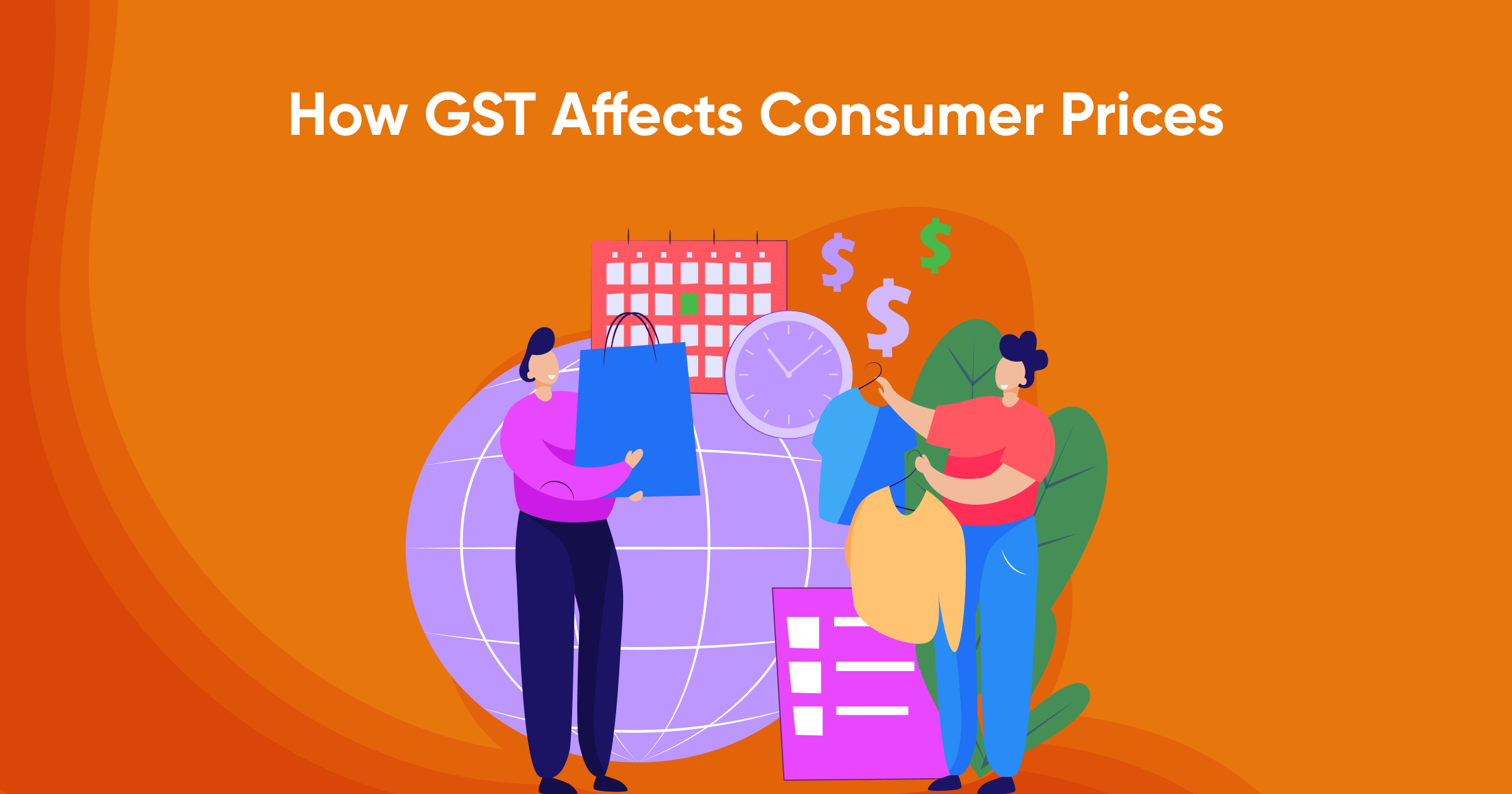GST: The Price Tag on Your Purchases
Did you know that the price of almost everything you buy is influenced by a single tax? It's called GST(Goods and Services Tax). The introduction of GST in India was a monumental step in tax reforms, aiming to simplify the indirect tax structure and boost economic growth. While the intent was clear, the impact on consumer prices has been a topic of much debate and analysis. This article delves deeper into how GST has influenced the cost of goods and services for the average consumer.
Understanding GST
Before we delve into the impact, it's crucial to understand the basics of GST. It's a consumption-based tax levied on the sale of most goods and services. Unlike the previous complex tax regime, GST is a single, indirect tax that replaced a multitude of taxes, including central excise duty, service tax, value-added tax (VAT), and octroi. The GST Council, a body comprising representatives from the central and state governments, determines the GST rates.
How GST Affects Consumer Prices: A Complex Equation
The relationship between GST and consumer prices is not straightforward. Several factors interplay to determine the final impact:
1. GST Rate Structure
- Multiple Slabs: GST has a multi-tiered structure with rates ranging from 0% to 28%. Products in higher tax slabs naturally become more expensive for consumers.
- Essential Goods: Essential items like food grains, fresh milk, and newspapers are exempted from GST, benefiting consumers.
- Luxury Goods: Products categorized as luxury items, such as high-end cars, tobacco, and aerated drinks, are taxed at higher rates, leading to increased prices.
2. Input Tax Credit (ITC)
- Benefit for Businesses: Businesses can claim credit for the GST paid on their inputs, which reduces their overall tax liability.
- Impact on Prices: Theoretically, businesses can pass on this benefit to consumers in the form of lower prices. However, the extent to which this happens depends on various factors, including market competition and profit margins.
3. Cascading Effect
- Pre-GST Scenario: The cascading effect, where taxes were levied at multiple stages of production and distribution, led to inflated prices.
- GST's Role: By subsuming multiple taxes, GST eliminated the cascading effect, potentially leading to lower prices for consumers.
4. Compliance Costs
- Administrative Burden: Implementing GST involves additional compliance costs for businesses, which they might pass on to consumers in the form of higher prices.
- Digitalization: While GST has pushed for digitalization, the initial costs of compliance, such as software and hardware upgrades, might have added to business expenses.
5. Inflationary Impact
- Indirect Effect: GST implementation coincided with other factors influencing inflation, making it difficult to isolate its exact impact.
- Short-term Fluctuations: In the initial phases, some price increases were observed, but these were largely attributed to supply chain disruptions and other economic factors.
Winners and Losers
The impact of GST on consumer prices has been uneven.
- Winners: Consumers of essential goods and services, and those benefitting from reduced cascading effects have seen price reductions.
- Losers: Consumers of luxury goods, automobiles, and certain services with higher GST rates have borne the brunt of increased prices.
Sector-wise Impact
- FMCG: While some products saw price increases due to higher GST rates, overall, the impact on FMCG prices has been relatively moderate due to ITC benefits and increased competition.
- Automobile Industry: The impact has been mixed. While some segments have benefited from lower GST rates, high-end cars and SUVs continue to be expensive due to higher taxation.
- Real Estate: The impact on property prices has been indirect, primarily through increased construction costs due to higher GST on building materials.
- Services Sector: Services like restaurants, hotels, and transportation have seen an increase in prices due to the higher GST rates applicable to them.
Let's Focus on a Specific Aspect of GST's Impact
Industry-Specific Analysis
- Impact on the Automobile Industry: Delve into how different segments (luxury, mass market, commercial vehicles) have been affected by GST.
- Effect on the Real Estate Sector: Examine the influence of GST on property prices, construction costs, and affordable housing.
- Analysis of the FMCG Sector: Explore how GST has impacted different product categories within FMCG and the role of ITC in price determination.
Consumer-Based Perspective
- Impact on Low-Income Households: Analyze how GST has affected the cost of living for low-income families, focusing on essential goods and services.
- GST and Inflation: Explore the correlation between GST implementation and inflation rates, considering factors like supply chain disruptions and global economic conditions.
- Consumer Behavior Changes: Discuss how GST has influenced consumer buying patterns and preferences.
Policy and Economic Implications
- GST Compensation Cess: Examine the role of the compensation cess in mitigating revenue losses for states and its impact on consumer prices.
- GST Rate Rationalization: Discuss the potential benefits and challenges of simplifying the GST rate structure and its implications for consumer prices.
- GST and Ease of Doing Business: Evaluate how GST has improved the business environment and its indirect impact on consumer prices through increased competition and efficiency.
Challenges and Way Forward
While GST has brought about significant changes, challenges remain. Ensuring smooth ITC claims, addressing the issue of fake invoices, and rationalizing GST rates are crucial for optimizing the system.
The government has taken steps to address these challenges, such as implementing stricter compliance measures and introducing measures to facilitate ITC claims. Further simplification of the GST structure and rate rationalization can help mitigate the impact on consumer prices.
In conclusion, registering for GST is a beneficial step for both businesses and consumers. It simplifies tax compliance, promotes transparency, and helps in the overall growth of the economy. Everyone should consider registering for GST to take advantage of these benefits. For more information, visit GST in India.
Frequently Asked Questions
How has GST impacted the overall price level for consumers?
While GST aimed to simplify the tax structure and potentially reduce prices, the actual impact has been mixed. While some products have become cheaper due to the removal of cascading taxes, others, especially luxury goods and services, have become more expensive due to higher tax slabs.
Does GST benefit all consumers equally?
No, the impact of GST on consumers varies based on income levels and consumption patterns. Lower-income households, which spend a larger proportion of their income on essential goods, generally benefit from GST exemptions on these items. However, higher-income households may see a greater impact on their expenses due to higher taxes on luxury goods and services.
How has GST affected the prices of essential goods and services?
GST has generally been beneficial for consumers of essential goods and services. Many essential items, such as food grains, milk, and newspapers, are exempt from GST, leading to price reductions. However, the prices of some essential services, like transportation and restaurants, have increased due to higher GST rates.
Has GST led to increased inflation?
The relationship between GST and inflation is complex. While GST implementation coincided with other inflationary factors, it's difficult to isolate its specific impact on price levels. Some experts argue that GST has contributed to short-term price increases, while others believe its long-term impact on inflation is neutral.
What measures can be taken to mitigate the negative impact of GST on consumer prices?
Several measures can be considered to address the negative impact of GST on consumer prices. These include rationalizing GST rates, simplifying the tax structure, and implementing effective mechanisms to prevent businesses from passing on unnecessary costs to consumers. Additionally, increasing competition and promoting digitalization can help to moderate price increases.







